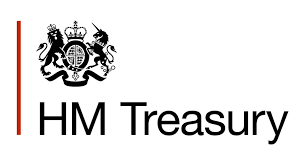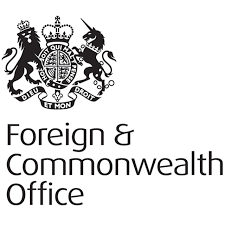PRESS RELEASE : Post pandemic retail recovery sees lowest number of store closures since 2014 [March 2023]
The press release issued by PWC on 1 March 2023.
- Stores are closing at their slowest rate since 2014, with net closures also at their lowest level in five years
- Closures now at 32 per day with 22 new outlets opening per day across Great Britain
- Retail park and leisure operators continuing to thrive
PwC has launched the latest figures for stores opening and closing across Great Britain. The research is created in association with the Local Data company. The twice yearly research tracks over 200,000 outlets in over 3,500 locations to gain a picture of the changing landscape of high streets, retail parks, shopping centres and stand alone outlets.
The latest research shows the lowest number of closures since the research began marking a positive turn for retail post-pandemic. The 2022 full-year results show a total of 11,530 chain outlets (those businesses with five or more outlets) exited GB high streets, shopping centres and retail parks – a significant drop from the 2021 figure of 17,219 outlets. Equivalent to 32 closures per day, the figure remains significantly lower than the almost 50 per day that were closing in the pandemic period. New store openings have improved with 7,903 store openings (equivalent to 22 per day) this year, they are at the highest since 2019. Net closures now sit at -10 per day, marking the lowest rate since 2016 – and just 1.7% of the total number of chain outlets, compared with the 5.7% that closed in 2021.
Retail parks remain the most resilient outlet type with a small -0.3% closure rate with shopping centres (-1.6%) also recovering at a promising rate. High Streets were slightly lower at -2.6% but all outlet types saw a significant improvement in their net closure rates.
Lisa Hooker, Industry Leader for Consumer Markets at PwC comments on the positive figures:
“It is great to see how retail and leisure operators are increasing in confidence and investing back into bricks and mortar after a few years of uncertainty across the sector. We are seeing innovative store openings including services and the use of technology that delights the consumer and appeals to the younger shopper who tells us they still love stores. While high streets are also recovering well, the need to coordinate a fragmented landlord base and others with vested interests, alongside the type of occupant, means a slightly slower recovery. Rent levels have also normalised, and with changes to the business rates due to come in April, this should also encourage new openings across many locations, adding to the impressive bounceback of retail parks, shopping centres and the growth of local entrepreneurship.”.
The variation across the regions has also narrowed – a trend first noticed in the first six months of 2022. That trend has continued to the extent that regional variations have nearly gone. This year has seen the spread of results (GB average -1.7%) have less than one percentage point between the worst performing (West Midlands at -2.3%) and the best (South East -1.3%). This is a positive turnaround for London, which was particularly hard hit by the pandemic lockdowns. It was -5.8% in both 2020 and 2021, significantly worse than any other region, but just -2.2% in 2022.
Lucy Stainton, Commercial Director for the Local Data Company who collect the research talks about the trends in the 2022 data:
“CVA and administration activity dropped in 2022, helping to drastically reduce the total number of closures across the market. Alongside the benefits of the first full year free from restrictions, the return of office workers and tourism boosted footfall, supporting new store openings.
Shopping centres bounced back in 2022 after a turbulent period as acquisitive brands opened units across destination centres. Retail park performance also improved as easy access, free parking and the convenience of these locations attracted shoppers.
Stronger than anticipated golden quarter performance provided a solid base from which to start 2023, as postal strikes drove shoppers back to bricks and mortar for their Christmas shopping. We expect 2023 to remain positive with funding available for stores to protect against high energy prices, the continuation of workers returning to offices and a revision to business rates providing much needed support to navigate current market headwinds.”
Eight of the 100 outlet categories tracked by the Local Data Company saw net growth in double digits. Of those. leisure outlets accounted for half of those categories.
Takeaways continue to top the league table for new openings with demand for both food on the go and home delivery continuing post pandemic. Many are franchise operators, as are the other success story: convenience stores. Nimble, with significant local knowledge and capital-light, these local entrepreneurs can move quickly and service gaps in the market backed by strong brands and helped by lower rents as other operators have retreated post-pandemic. Other categories, such as DIY and pets are bouncing back, helped by pandemic trends.
Rick Jones, Hospitality, Sports and Leisure Leader at PwC comments on the positive news for leisure operators:
“The marked growth in the leisure sector is great news for towns and cities across Great Britain. This is particularly marked for those that have a growing student population or are emerging family towns. The food and beverage revival is testament to how quickly successful businesses with strong and relevant consumer offerings have mobilised their efforts, including taking advantage of site availability and more favourable rents. to satisfy the resurgent post-lockdown demand.”
On the other hand, service providers are driving the closures across the sector. A structural shift online is responsible for the majority of closures in many of the categories, such as the four fastest declining categories of banks, betting shops, charity shops and fashion retailers. Even so, all four categories saw a significant slowdown in closure numbers compared with 2021; for example, fashion saw only 228 net closures in 2022, an over 80% reduction compared with 2021 when a number of large clothing retailers closed or moved online.



